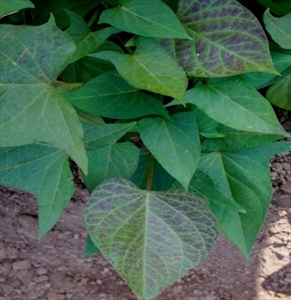- Worldwide distribution. In Oceania, only from Solomon Islands. Only known from sweetpotato. Abbreviation is SPCSV. It is a crinivirus.
- Damage: sometimes a reddening of older leaves, stunting; mostly no symptoms. With other viruses (Sweetpotato feathery mottle virus, Sweetpotato virus G and Sweetpotato cavemo virus), leaves yellow, deformed, and few storage roots. SPCSV allows other viruses to reach high concentrations.
- Detection: grafting to Ipomoea setosa, or using ELISA and/or PCR.
- Spread: (i) whiteflies; (ii) cutting used for planting; (iii) sprouts from storage roots. Survival in vines, storage roots, and wild Ipomoea.
- Natural enemies: preserve predators (ladybird beetles, lacewings, hoverflies), and parasitoids.
- Cultural control: use planting material from healthy 'seed' scheme (i.e., mother plants regrown from meristems after heat treatments and tested negatively for SPCSV; weed wild Ipomoea species; new crops at least 15 m from old crops; rogue diseased plants; and collect and burn or bury debris at harvest.
- Chemical control: not recommended, uneconomic; if necessary, avoid broad-spectrum insecticides, use insecticidal soaps, white or horticultural oils.




